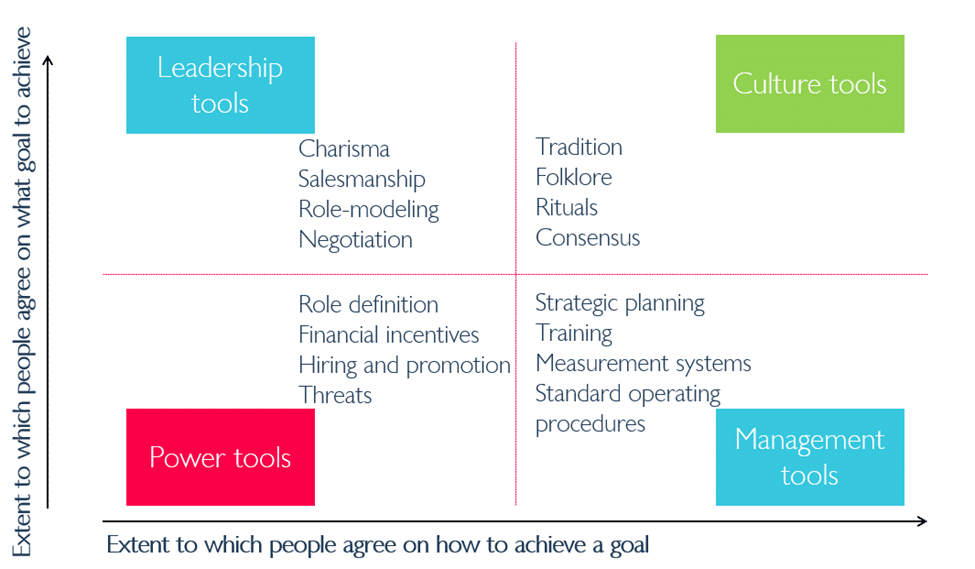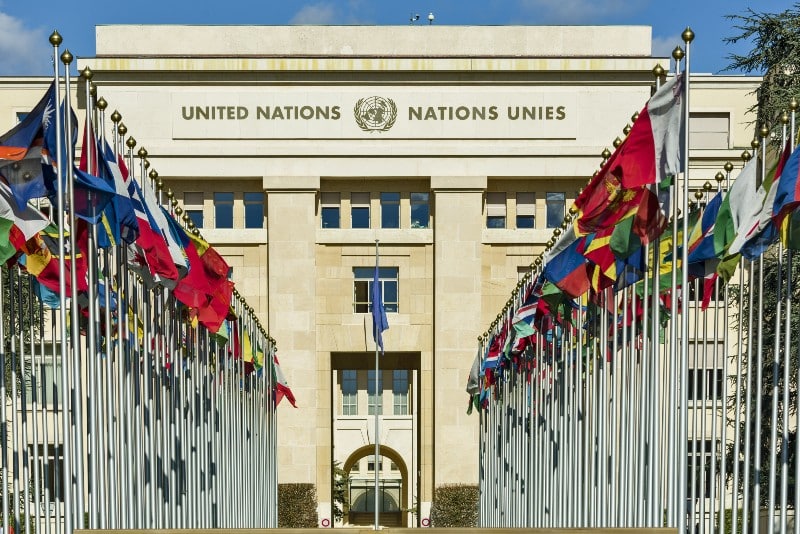Despite hosting 27 UN Climate Change Conferences over the past three decades, UN chief, Antonio Guterres remarked in November, 2022 that the world is on a “highway to climate hell.” It’s no surprise that Guterres is calling for a “no nonsense” summit in 2023.
Unfortunately, the call will not only fall on deaf ears, but it is unlikely to succeed.
First, the United Nations wields little power over member nations because it receives most of its funding from its members, with the United States as the largest donor. It’s difficult to demand a “no nonsense” summit from the entities funding your existence as an organization.
Second, an innovation theory in our research provides better clarity on how organizations can create better cooperation among parties.
The tools of cooperation framework can help leaders understand which managerial tool to use depending on the circumstance in which they find themselves. It can be broken down into a 2-by-2 matrix.

The two most important factors that define the tools of cooperation to use are:
1. The degree to which employees agree on the goal set forth, and
2. The degree to which employees agree on how to achieve the goal.
Depending on where most collaborators reside in the matrix is what determines the kind of tool they use. There are four main cooperation tools.
Power tools: Power tools are used when collaborators have little to no agreement on what the goal for a particular project is or should be and how to achieve the goal. In this case, tools such as a redefinition of roles, control systems, threats, and coercion are most important. By definition, to use a power tool, a leader must have power to wield. Unfortunately, Guterres is trying to use power tools when he does not have power over member nations.
Leadership tools: Leadership tools such as charisma, role modeling, salesmanship, and vision setting are typically used when collaborators agree on the goal but not on how to get there. In the case of climate change, member nations all agree that reversing climate change is important, but it’s still unclear how to get there. This is where leadership tools could be used.
Leaders are often tempted to go for power tools when their collaborators and partners disagree with their approach, but that would be wrong. Inspiring partners, most of whom already agree with the goal, to commit to your approach can go a long way in building trust and solidifying loyalty among collaborators.
Management tools: Managers should use management tools when there is little agreement on the goal but much agreement on the process. Tools such as training, measurement systems, strategic planning, standard operating procedures, and hiring and promotions are examples of management tools. Management tools are the most common set of tools used.
For example, in many old and large organizations where there are union and non-union employees, the goals for each type of employee often differs. However, the process by which they go about their work typically leads to efficiency. In the automotive industry for instance, once both groups agree that certain manufacturing processes will result in products with the required level of quality and cost, they’ll work hard to follow the processes.
Culture tools: In situations where people agree on both the goal and how to achieve it, culture tools can be employed. Culture tools are rituals, traditions, and even consensus voting. As helpful as culture tools can be to make progress on specific initiatives, they can also be detrimental to certain global efforts.
By assessing the tools of cooperation, it is clear that Guterres and the UN should employ leadership tools. It is more difficult and can often seem unnecessary but few other tools are possible to elicit the kind of transformative change needed to solve the global environmental challenges we face.
So, instead of hosting a “no nonsense” summit, the UN should host a leadership summit with the right people in the room: innovators.



